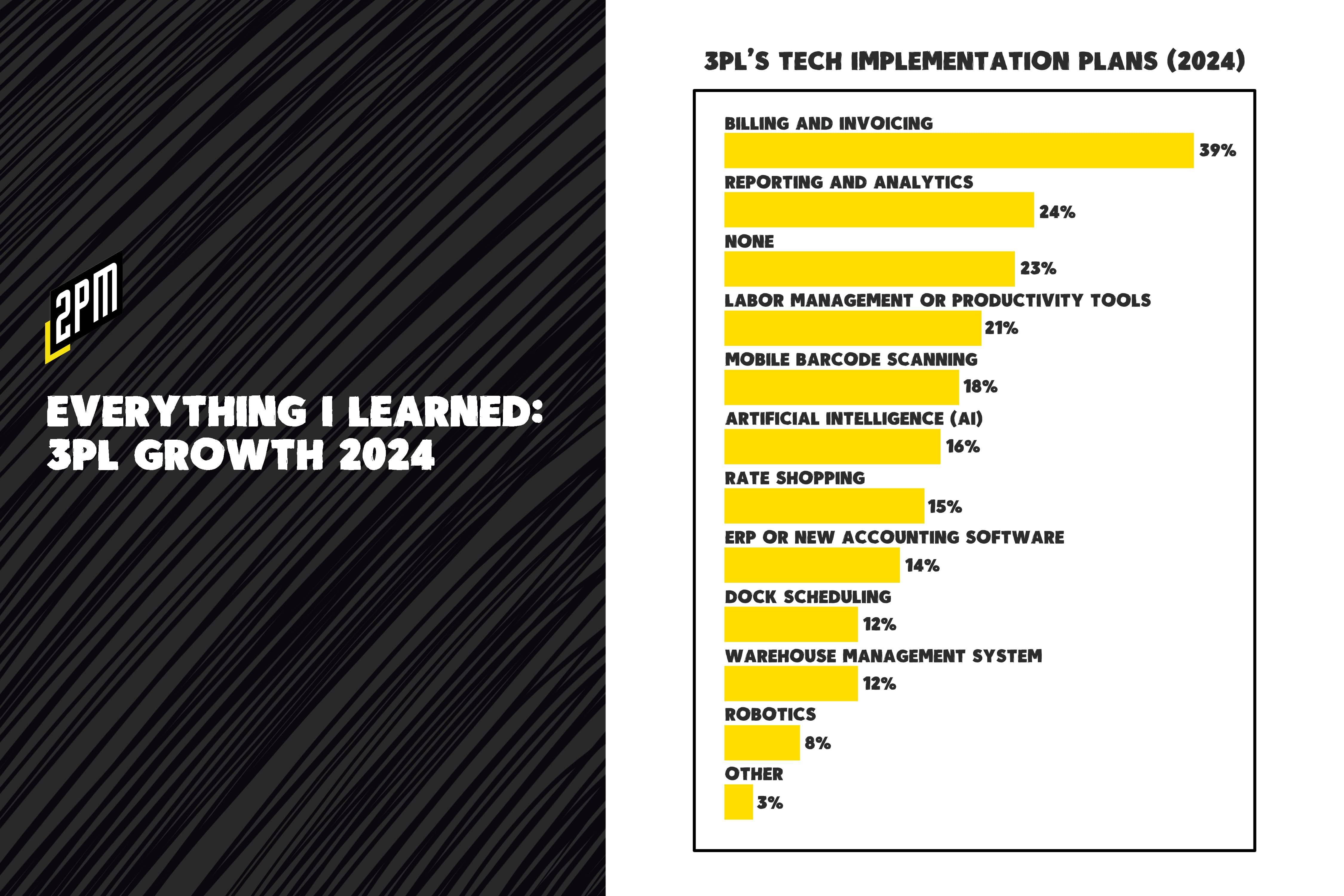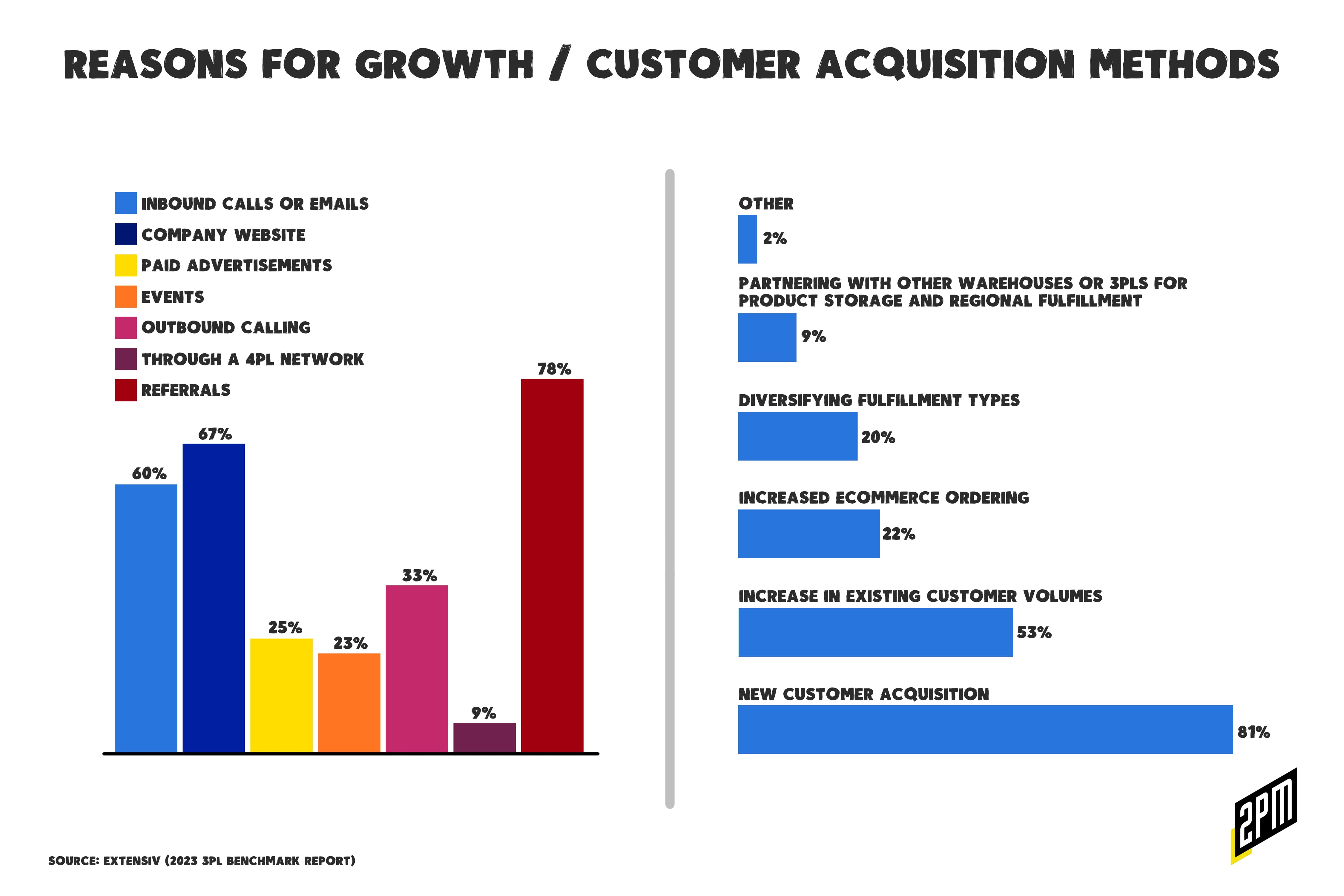
In the evolving industry of global commerce, third-party logistics providers have emerged as pivotal architects of retailer success, crafting the backbone of supply chain management for entities ranging from nascent startups to colossal conglomerates. No, 3PL is no longer just a service sector; it’s an ecosystem – indistinguishable from other elements of a retailer’s brand awareness – where economics, customer-centric strategies, and cutting-edge technology converge to propel businesses forward.
This new 2PM resource delves deep into the fabric of 3PLs, the economic underpinnings, customer acquisition intricacies, and operational nuances that define their success, with a special spotlight on one 3PL who seems to be mastering their niche in this competitive landscape.
The economic viability of 3PL providers is intricately tied to their operational efficiency, warehouse management software integration, and unwavering commitment to customer satisfaction. At its essence, the competitive advantage of a 3PL hinges on its capability to streamline logistics costs while elevating service quality to new heights. This balance is achieved through strategic management of warehousing, transportation, and fulfillment processes, alongside leveraging state-of-the-art technology for seamless tracking, analytics, and unit economics.
In this fiercely competitive segment of the retail world, providers carve niches through unique value propositions, whether it be specialized handling capabilities, advanced technological frameworks, stellar customer support, or a focus on a certain caliber or category of customer. Effective customer engagement strategies pivot on targeted marketing endeavors, strategic alliances, and showcasing tangible success stories that underscore their prowess and reliability. More on that in a moment.
The Vanguard of 3PLs: A Summary Exploration
The layout of the 3PL industry is marked by an operational diversity of providers, each bringing unique strengths to the table. Some are independently owned, some are venture-backed. Some are run by startup founders and others are owned and operated by warehouse workers-turned leaders. Here’s a brief look into twenty notables within the 3PL landscape:
- CJ Logistics America and DHL Supply Chain stand as titans with rich legacies and expansive service portfolios, underpinning the global supply chain with robust infrastructure and innovative solutions.
- Echo Global Logistics and ShipBob represent the technological vanguard, harnessing the power of digital platforms to optimize logistics processes and enhance visibility across the supply chain.
- Fulfillment by Amazon (FBA) and FedEx Supply Chain leverage their parent companies’ colossal networks, offering unmatched reach and efficiency.
- Fulfyld, Hub Group, Red Stag Fulfillment, and Kenco Logistics spotlight the significance of tailored solutions, showcasing expertise in niche domains and customized service offerings.
- Lynden, Odyssey Logistics, and Penske Logistics underscore the strategic importance of geographic and operational diversity, catering to specialized transport and logistics needs across challenging terrains and markets.
- Phoenix Logistics, R2 Logistics, and Rakuten Supply Chain epitomize growth and adaptability, evolving in response to the ever-changing demands of global commerce and technological advancements.
- Ruan, Ryder System, Inc., Saddle Creek Logistics Services, and SEKO Logistics further enrich the 3PL ecosystem, each contributing with their distinctive operational models, sustainability initiatives, and customer-centric approaches.
3PL providers, like those listed above. grow market share by leveraging a blend of advertising and marketing to reach potential clients and build their brand presence in the market. Some of the most effective advertising strategies they use include:
Retail Media: By leveraging digital platforms, 3PLs can target specific audiences with tailored messages about their services and capabilities.
Content / Web Design: Creating valuable, informative content such as blog posts, white papers, case studies, and videos not only attracts potential customers but also builds trust and credibility.
Trade Shows and Industry Conferences: Participating in trade shows and conferences allows 3PLs to network with potential clients, showcase their services, and stay on top of industry trends. These events also provide a platform for direct engagement and lead generation.
Online Marketplaces and Directories: Listing services on online marketplaces and industry-specific directories can improve visibility among businesses actively seeking logistics solutions.
Traditional Advertising: Although digital methods are increasingly common, traditional advertising avenues like print ads in trade magazines, radio, and billboards can still be effective, especially for reaching a particular audience.

As you can see above, the sixth and most potent growth driver remains Efficacy-driven Word of Mouth / Referral. When 3PLs consistently deliver exceptional service, maintain inventory accuracy, and ensure timely delivery: they cultivate a reputation for reliability and excellence. Satisfied clients become enthused vocal advocates, sharing their positive experiences within their networks. This word-of-mouth endorsement is incredibly valuable, as it comes with the trust and credibility of real-world usage. In the logistics industry, where reliability can significantly impact a business’s operational success, such endorsements serve as a powerful tool for market share expansion, making efficacy-driven word of mouth the cornerstone of organic growth for 3PL providers
****
Let’s break out Red Stag Fulfillment from the others listed.
There is a discernible shift towards specialization that will begin to characterize the 3PL industry landscape. Red Stag Fulfillment exemplifies this trend, distinguishing itself by focusing primarily but not entirely on eCommerce fulfillment for bulky or high value items, a domain often overlooked due to its inherent challenges. This specialization not only enhanced operational efficiency and customer satisfaction but also positions Red Stag as a leader in this particular market segment.
Championing the motto “we get it right, or we make it right,” Red Stag embodies a culture where accountability and customer-centricity are paramount. This ethos is underpinned by their impressive metrics: industry-leading inventory accuracy rates and a steadfast guarantee compensating for any fulfillment errors, setting a benchmark in the logistics domain.
Red Stag’s operational metrics illuminate their supremacy in the logistics field. Inventory accuracy often becomes the linchpin of a company’s operational success. While the industry norm hovers around a 98% accuracy rate, a seemingly impressive figure at first glance, this statistic harbors a hidden cost. To put it in perspective, for every $1 million in inventory, the average fulfillment company’s shortfall translates to a tangible loss of $20,000 in a retailer’s goods. A stark contrast to this industry standard, Red Stag Fulfillment safeguards against this type of inventory loss. In the rare event of damage or loss upon arrival at their facilities, they actually refund the wholesale costs of goods.
The cornerstone of Red Stag’s operational excellence lies in it order processing protocols. They appear to guarantee that 100% of orders are dispatched in accordance with the service level chosen by our clients, be it Next Business Day with cutoff times at either 3:00 pm or 5:00 pm. Should they fall short, not only is the shipping fee waived, but the retailer is also credited with a $50 compensation for any inconvenience caused. This policy applies uniformly, even in instances where an order is dispatched with incorrect items or quantities, emphasizing Red Stag’s “make it right” ethos.
According to their operational team, within the initial months of partnership, one client experienced the dispatch of 50,490 packages with a staggering 99.996% punctuality in order processing and a 99.994% accuracy rate in order fulfillment.
And a long-standing partner revealed an astounding 99.999% accuracy across over 10,000 locations and more than 200,000 units. A minuscule discrepancy of 0.001% was met with immediate financial restitution, underscoring our unwavering commitment to accountability.
As a result, Red Stag Fulfillment’s YTD metrics boasted a 99.94% accuracy rate spanning inbound logistics, inventory management, order accuracy, and timely shipping. This figure not only epitomizes our dedication to operational excellence but also cements our position as a leader in the logistics industry, distinguished by an ethos that prioritizes precision and reliability above all else.
By mitigating losses linked to inventory inaccuracies and ensuring the punctuality and precision of order fulfillment, Red Stag significantly slashes costs for its clients, bolstering their financial health and operational sustainability.
Red Stag Fulfillment uses these principles and operational efficiency to effectively carve its niche, an unwavering focus on eCommerce fulfillment for bulky items.
****
The landscape of third-party logistics is a testament to the evolving dynamics of global commerce, where efficiency, reliability, and innovation are paramount. In this complex ecosystem, 3PL providers emerge as crucial enablers of business success, offering not just logistics solutions but strategic partnerships that drive growth, enhance customer satisfaction, and foster economic resilience. As the industry marches forward, the role of specialized 3PLs will undoubtedly become even more central, heralding a future where precision, adaptability, and customer-centricity define logistics excellence.
By Web Smith
